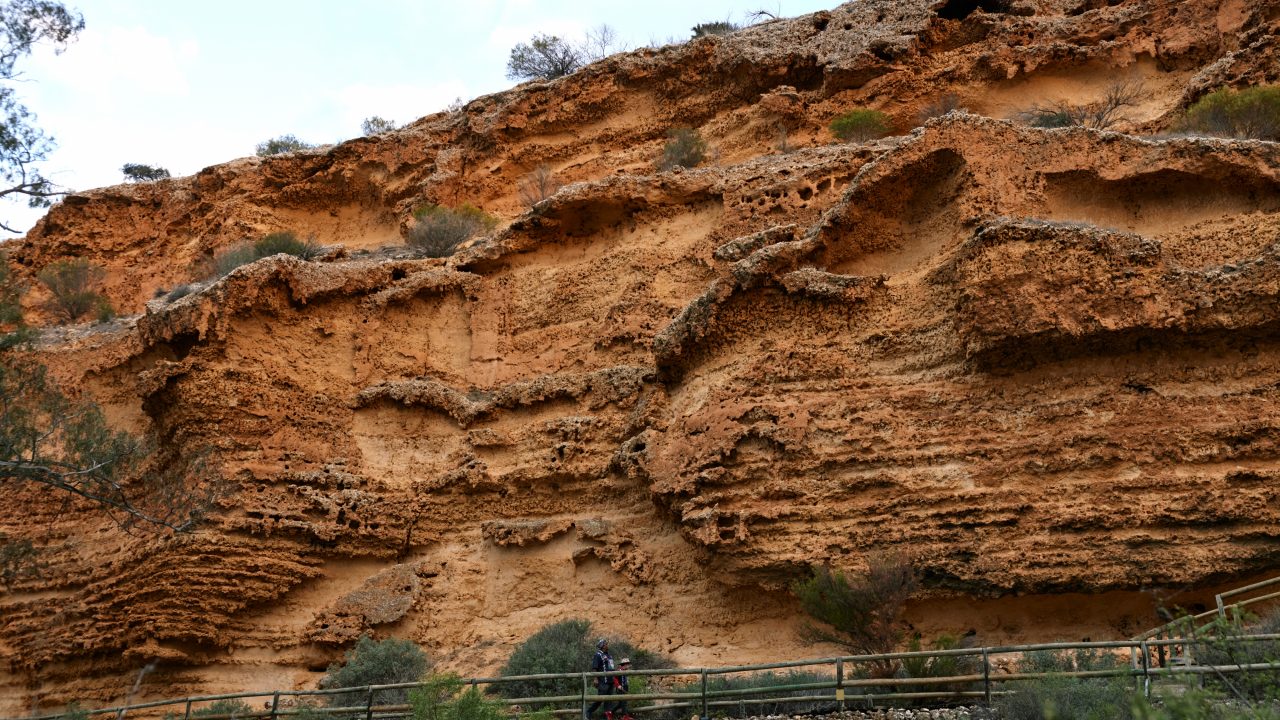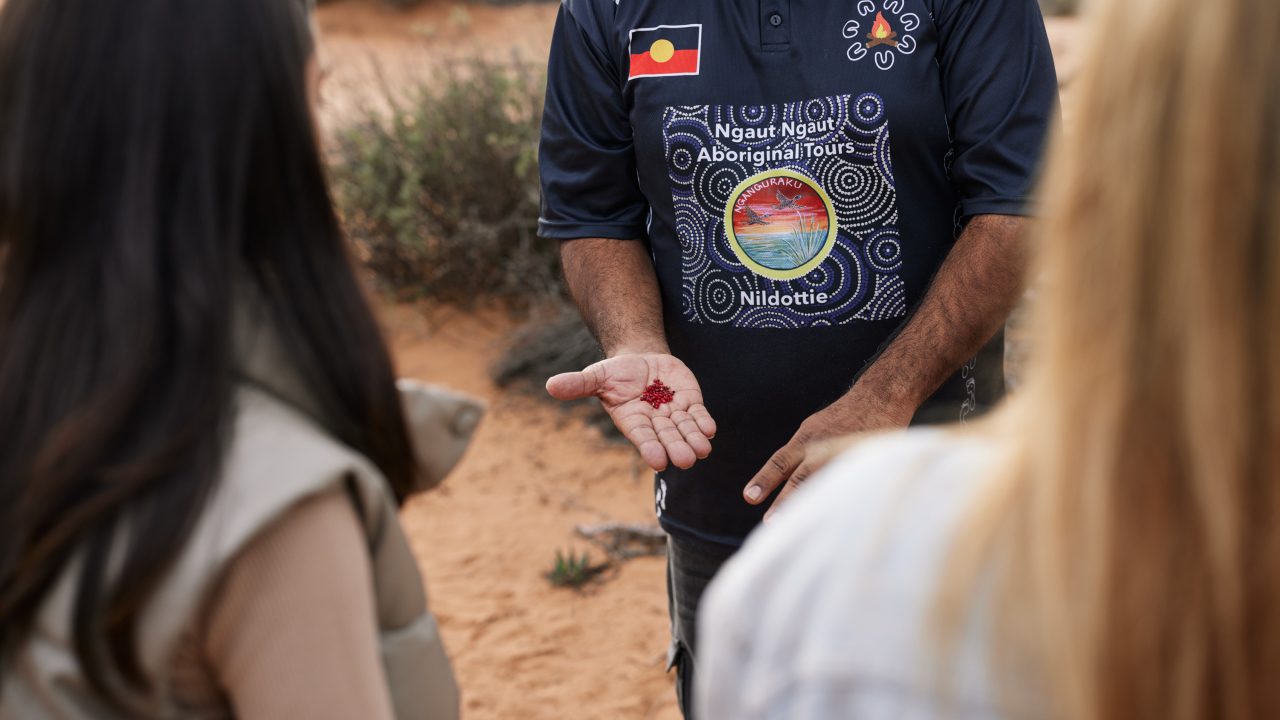History
The Murray River isn’t just a breathtaking natural wonder – it’s a gateway to the past.
For over 40,000 years, this mighty river has sustained life and culture, connecting people to the land and each other. From the Dreaming stories of the Ngarrindjeri people to the paddle steamers that turned the river into a lifeline of trade, the Murray has always shaped the heartbeat of South Australia.
If you love a mix of adventure and history, it’s time to embark on a journey through time along the Murray and into the timeless Coorong.
A river of ancient stories
The First Peoples of the River Murray and Mallee and the Ngarrindjeri people have maintained a strong spiritual and cultural connection to the river for tens of thousands of years. The river is central to life, culture and ceremony – a provider and a protector.
One of the most powerful stories is that of Ponde, the giant Murray cod. According to Ngarrindjeri Dreaming, Ponde carved the river’s winding path as he was chased in a bark canoe. These stories are not only beautiful – they’re deeply symbolic, embedding layers of knowledge about the landscape, water, and life.
Raukkan, a significant community near Lake Alexandrina, continues to honour this deep heritage. It’s known as the birthplace of David Unaipon – the legendary Aboriginal inventor, author and preacher whose portrait appears on Australia’s $50 note. Behind him on the note is the Raukkan church, built in 1869, which still stands today as a place of history and reflection.
Visitors can explore this rich cultural past through storytelling, traditional basket weaving, and visits to ancient midden sites. For a deeper understanding, Camp Coorong offers immersive Ngarrindjeri cultural experiences, from learning about native plants and traditional medicine to walking Country with Elders.
A river highway of the 1800s
In the 19th century, the Murray transformed into a thriving trade route. Paddle steamers chugged along its length, connecting remote communities with the outside world. The river was South Australia’s original outback highway – and a pretty scenic one at that.
The first commercial paddle steamers arrived in 1853, led by the Lady Augusta, captained by Francis Cadell, and the Mary Ann, helmed by William Randell. Their historic journeys sparked a boom in river trade – so much so that the South Australian Government offered an £8,000 prize to the first steamer to reach Echuca. The challenge was met, and the river soon carried wool, wheat, oats, salt and more to settlers and miners.
By 1890, more than 170 paddle steamers cruised the Murray-Darling system. Some – like the Platypus – even had onboard seamstresses, taking garment orders as they floated from port to port. Others served as travelling churches or floating hotels. Think of them as South Australia’s original mobile businesses!
Fun fact: Paddle steamer captains relied on hand-drawn maps filled with landmarks like river gums and rocky outcrops. Each trip was an unpredictable journey through sandbars and ever-changing channels.
Maritime lovers can step back in time at the Mannum Dock Discovery Centre, where interactive exhibits showcase this golden river era. Or hop aboard the historic PS Marion for a heritage cruise from Mannum – a rare chance to sail the river like they did 150 years ago. For an extended adventure, the PS Murray Princess offers multi-day cruises with expert commentary, old river port visits, and all the charm of 19th-century travel – paddle wheel and all.
Fun fact: The Murray Princess is the largest paddle wheeler in the Southern Hemisphere.
The Coorong connection: a maritime gateway
As steamers headed south, the Lower Lakes and Coorong formed a vital link in the trade route. Towns like Meningie buzzed with activity, serving as staging posts along the journey from Adelaide to Melbourne. Steamers crossed Lake Alexandrina and Lake Albert, delivering essential goods and mail to remote communities.
To learn more, drop into the Meningie Information Hub, nestled next to Lions Park. Just around the corner, the Meningie Cheese Factory Museum showcases early settler relics and dairy industry history – a nod to Meningie’s reputation for producing some of South Australia’s finest dairy products.
The Coorong isn’t just a landscape of beauty – it’s a place where stories echo across sand dunes and saltwater lagoons.
This region inspired Colin Thiele’s beloved novel Storm Boy, a timeless tale of connection, loss and the wild magic of the Coorong. The novel – and its film adaptations – brought the region’s landscapes to life for audiences across the globe. Visitors can retrace the story by exploring the sand dunes and secluded shorelines that once cradled the friendship of Storm Boy and Mr Percival, the pelican.
For an immersive experience, cruise the Coorong with Spirit of the Coorong Cruises from Goolwa. Their tours combine awe-inspiring nature with Ngarrindjeri storytelling and visits to cultural heritage sites like ancient middens. For something more off-the-beaten-track, Coorong Wildside Tours offers intimate explorations perfect for birdwatchers, nature photographers, and those wanting to truly connect with Country.
The river that shaped a region
The Murray River has been more than just a waterway – it’s been a frontier, a food bowl, a cultural icon, and a critical resource. As agriculture and irrigation developed in the 20th century, locks and weirs were introduced under the River Murray Waters Agreement of 1914. These developments transformed the region’s farming capacity but also brought challenges like water overuse and environmental strain.
Today, the Murray-Darling Basin Agreement helps manage the river’s future, ensuring this living, flowing museum continues to sustain life and culture for generations to come.
Ready to explore history where it happened? Plan your time-travelling road trip through the Murray River, Lakes and Coorong today.

